Top 10 Biggest Hindu Temple In The World
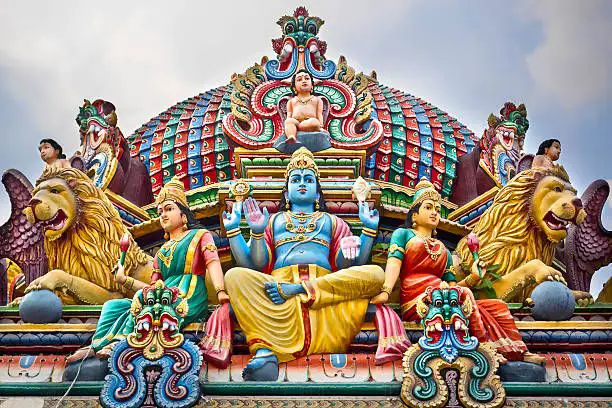
Hinduism is a major world religion that originated in the Indian subcontinent and has a rich and diverse history spanning over thousands of years. It is the third-largest religion in the world with over one billion followers, and it is characterized by a wide range of beliefs, practices, and traditions.
One of the core concepts in Hinduism is the belief in reincarnation, which means that after death, a person's soul is reborn into a new body.
Karma, or the law of cause and effect, is also a central tenet of Hinduism, and it is believed that a person's actions in this life will determine their fate in the next.
Hinduism also has a diverse pantheon of deities, with many gods and goddesses representing different aspects of the divine.
The most commonly worshipped deities include Brahma, Vishnu, and Shiva, who make up the Trimurti or three aspects of the divine.
Other important practices in Hinduism include yoga, meditation, and the performance of puja or ritual worship.
The Hindu scriptures, including the Vedas, Upanishads, and Bhagavad Gita, are also considered essential texts for understanding the religion and its teachings.
Here are the top 10 biggest Hindu temples in the world by area:
1. Angkor Wat - Cambodia
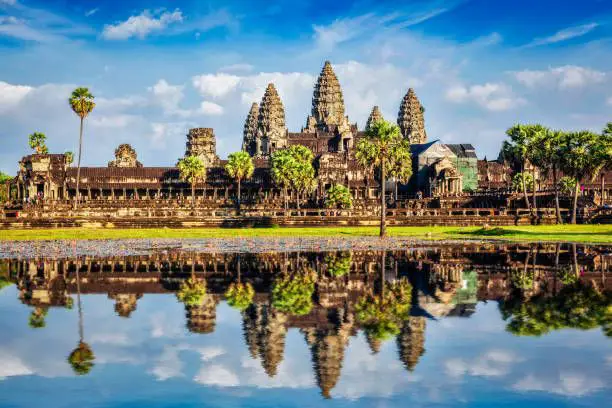
Angkor Wat is a Hindu temple complex located in Cambodia and is considered one of the largest and most important Hindu temples in the world.
It was built in the early 12th century by King Suryavarman II in the capital city of the Khmer Empire and was originally dedicated to the Hindu god Vishnu.
The temple complex covers an area of 162.6 hectares (402 acres) and was built in the classical Khmer architectural style.
It is characterized by its stunning bas-reliefs and intricate carvings that depict scenes from Hindu mythology, as well as its five central towers that represent Mount Meru, the mythical home of the gods in Hinduism.
Over time, Angkor Wat transitioned from being a Hindu temple to a Buddhist temple, and it remains an important religious and cultural site in Cambodia.
In 1992, it was declared a UNESCO World Heritage Site and is visited by millions of tourists each year.
2. Sri Ranganathaswamy Temple - India
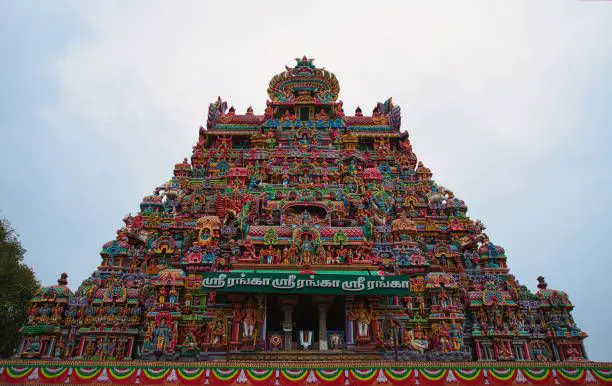
The Sri Ranganathaswamy Temple is a Hindu temple located in the town of Srirangam in the Indian state of Tamil Nadu.
It is considered one of the largest and most important Hindu temples in the world and is dedicated to the Hindu god Vishnu.
The temple complex covers an area of 156 acres (63 hectares) and has seven prakarams or enclosures.
It is surrounded by walls that are up to 25 feet high and 21 towers or gopurams that are elaborately carved with scenes from Hindu mythology.
The main tower, known as the Rajagopuram, is 236 feet tall and is one of the tallest temple towers in India.
The temple has several smaller shrines dedicated to various gods and goddesses, as well as a sacred tank called the Chandra Pushkarini.
The main deity of the temple, Sri Ranganathaswamy, is depicted lying on a coiled serpent and is believed to be one of the forms of Lord Vishnu.
The Sri Ranganathaswamy Temple attracts millions of pilgrims and visitors each year and is considered an important religious and cultural site in India.
3. Akshardham - India
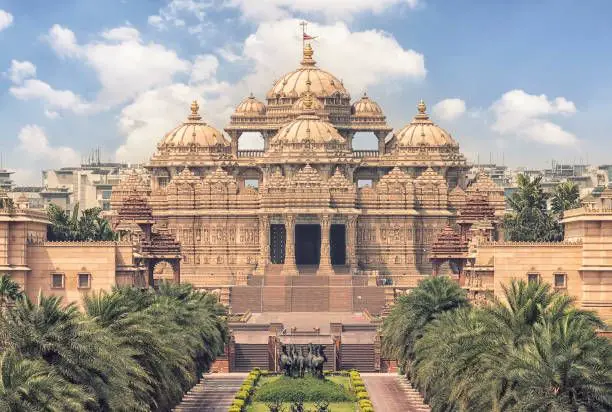
Akshardham is a Hindu temple complex located in Delhi, India. It is one of the largest and most popular Hindu temples in the world, known for its stunning architecture and intricate carvings.
The temple complex covers an area of 86,342 square feet (8,021 square meters) and was built using pink sandstone and marble.
It features 234 ornately carved pillars, 9 domes, and over 20,000 statues and carvings depicting scenes from Hindu mythology and Indian history.
The main temple is dedicated to Bhagwan Swaminarayan, a revered Hindu saint and teacher, and features a 11-foot-tall gold-plated idol of him.
The temple complex also includes several exhibition halls, gardens, and a water show.
Akshardham was opened in 2005 and has since become a popular tourist attraction and a center for cultural and spiritual activities in Delhi.
It is also known for its strict rules, including a ban on photography and mobile phones inside the temple complex.
4. Swaminarayan Akshardham - USA
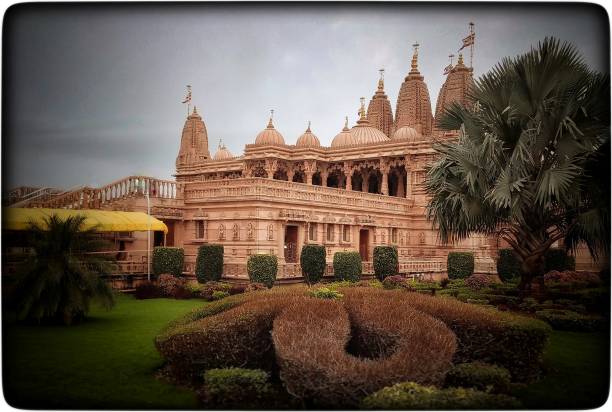
Swaminarayan Akshardham is a Hindu temple complex located in Robbinsville, New Jersey, USA. It is a branch of the Akshardham temple in Delhi, India, and is modeled after the original temple complex.
The temple complex covers an area of 160 acres and was built using Italian marble and Bulgarian limestone.
It features intricate carvings and sculptures depicting scenes from Hindu mythology and Indian history, as well as a central temple dedicated to Bhagwan Swaminarayan.
The temple complex also includes a large cultural center, a museum, and a theater, which host exhibitions and performances related to Indian culture and spirituality.
The complex also has a beautiful garden with a reflective pool, and a restaurant serving vegetarian food.
Swaminarayan Akshardham was inaugurated in 2014 and has since become a popular destination for tourists and devotees of Hinduism in the United States.
It is also known for its eco-friendly features, such as rainwater harvesting, solar power, and energy-efficient lighting.
5. Belur Math - India
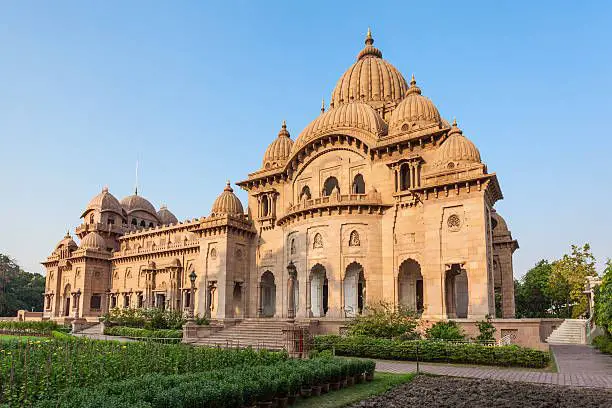
Belur Math is a Hindu monastery located on the banks of the Hooghly River in the city of Belur, in the Indian state of West Bengal.
It was founded in 1899 by Swami Vivekananda, a prominent spiritual leader and disciple of the 19th-century Indian saint, Sri Ramakrishna.
The monastery complex covers an area of 40 acres (16 hectares) and features several buildings that are constructed in a blend of Hindu, Islamic, and Christian architectural styles.
The main temple is dedicated to Sri Ramakrishna, and it also houses the shrines of his wife, Sarada Devi, and his disciple, Swami Vivekananda.
Belur Math is also home to a museum and a library that contain rare manuscripts and artifacts related to Hinduism and Indian culture.
The complex also has a guesthouse, a hospital, and a school that provides education to underprivileged children.
Belur Math is considered an important pilgrimage site for followers of the Ramakrishna-Vivekananda tradition and attracts thousands of visitors each year.
It is also known for its philanthropic activities, such as providing disaster relief and promoting rural development in India.
6. Meenakshi Amman Temple - India
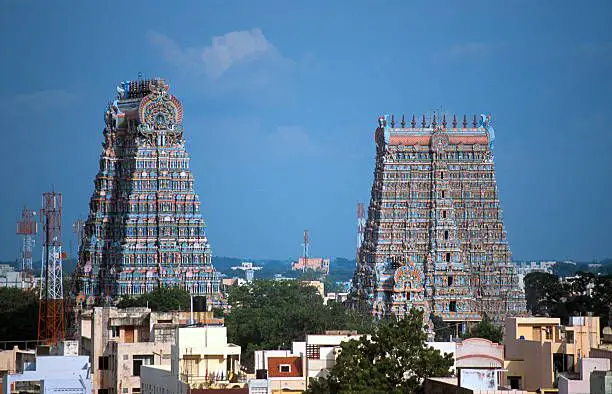
The Meenakshi Amman Temple is a Hindu temple located in the city of Madurai in the Indian state of Tamil Nadu.
It is considered one of the largest and most important Hindu temples in India and is dedicated to the goddess Meenakshi, an incarnation of the Hindu goddess Parvati, and her consort Lord Shiva.
The temple complex covers an area of 14 acres (5.6 hectares) and features several gopurams or towers that are elaborately carved and painted with scenes from Hindu mythology.
The main tower, known as the southern tower, is 170 feet (52 meters) tall and is adorned with over 1,500 sculptures.
The temple has several smaller shrines dedicated to various gods and goddesses, as well as a sacred pool known as the Potramarai Kulam.
The main deity of the temple, Meenakshi Amman, is depicted with three breasts, a unique feature that symbolizes her dual nature as both a mother and a warrior goddess.
The Meenakshi Amman Temple is an important religious and cultural site in India and attracts millions of pilgrims and visitors each year.
It is also known for its annual festival, the Meenakshi Thirukalyanam, which celebrates the divine marriage of Meenakshi and Lord Shiva and features a colorful procession and other cultural events.
7. Brihadeeswarar Temple - India
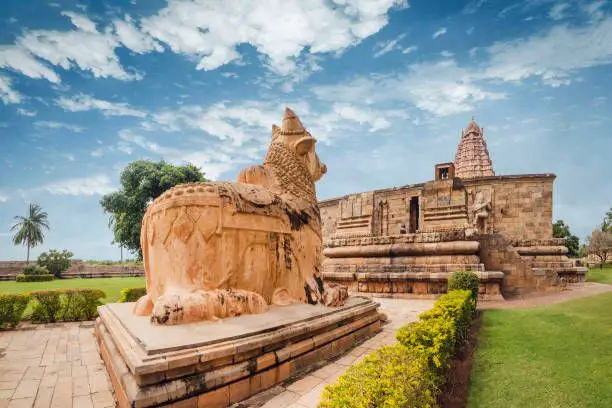
The Brihadeeswarar Temple, also known as the Peruvudaiyar Kovil, is a Hindu temple located in the city of Thanjavur in the Indian state of Tamil Nadu.
It is considered one of the largest and most important Hindu temples in India and is dedicated to Lord Shiva.
The temple was built by the Chola king Raja Raja I in the 11th century and is renowned for its magnificent architecture and intricate carvings.
The main tower or vimana of the temple is over 200 feet (60 meters) tall and is made entirely of granite. It is also adorned with elaborate carvings and sculptures depicting scenes from Hindu mythology.
The temple complex covers an area of 29 acres (12 hectares) and features several smaller shrines dedicated to various gods and goddesses.
The main deity of the temple, Lord Shiva, is depicted in the form of a lingam or a phallic symbol that is believed to represent his creative energy.
The Brihadeeswarar Temple is an important religious and cultural site in India and attracts thousands of pilgrims and visitors each year.
It is also recognized as a UNESCO World Heritage Site and is considered a masterpiece of Dravidian temple architecture.
8. Sringeri Sharada Peetham - India
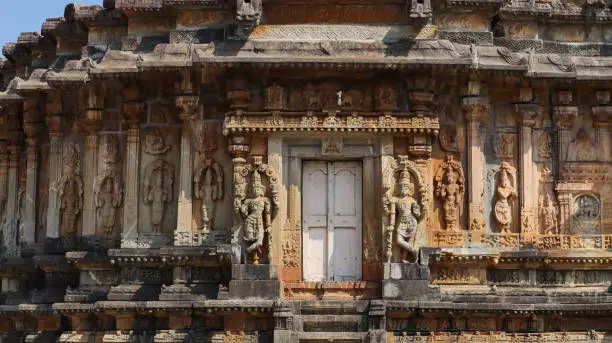
Sringeri Sharada Peetham is a Hindu monastery located in the town of Sringeri in the Indian state of Karnataka.
It is one of the four main monasteries established by Adi Shankaracharya, a great Hindu philosopher and reformer who lived in the 8th century CE.
The monastery is dedicated to the goddess Sharada, who is considered an incarnation of the Hindu goddess Saraswati, the goddess of learning and knowledge.
The main temple is known as the Sringeri Sharada Temple and houses a black stone image of the goddess Sharada, along with other deities.
The monastery also has several other shrines dedicated to various gods and goddesses, as well as a library that contains a large collection of ancient manuscripts and texts related to Hinduism and Indian culture.
Sringeri Sharada Peetham is considered an important center of learning and scholarship in India, and it is known for its contributions to the development of Hindu philosophy and theology.
The monastery also provides education and support to underprivileged communities in the region through its charitable activities.
The Sringeri Sharada Peetham is considered an important pilgrimage site for Hindus and attracts thousands of visitors each year.
It is also known for its serene and scenic location in the Western Ghats, surrounded by lush forests and waterfalls.
9. Thillai Nataraja Temple - India
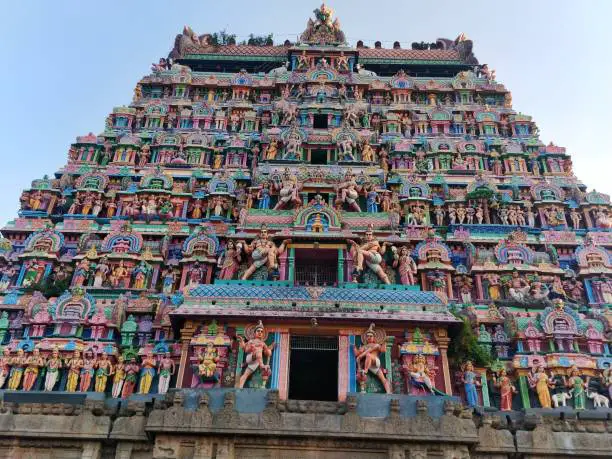
The Thillai Nataraja Temple, also known as the Chidambaram Temple, is a Hindu temple located in the town of Chidambaram in the Indian state of Tamil Nadu.
It is dedicated to Lord Nataraja, a form of Lord Shiva who is considered the lord of dance and the embodiment of cosmic energy.
The temple is known for its unique architecture, which incorporates elements of both Dravidian and Chola styles of temple architecture.
The main deity of the temple, Lord Nataraja, is depicted in a cosmic dance pose, with flames emanating from his hair and a snake coiled around his neck.
The temple complex covers an area of 40 acres (16 hectares) and features several smaller shrines dedicated to various gods and goddesses.
The main hall of the temple, known as the Kanaka Sabha, is adorned with intricate carvings and paintings that depict scenes from Hindu mythology.
The Thillai Nataraja Temple is an important pilgrimage site for Hindus and attracts thousands of visitors each year, especially during the annual Natyanjali Dance Festival, which is dedicated to Lord Nataraja and features classical dance performances by renowned artists from around the world.
The temple is also known for its association with the Tamil saint and poet, Thirugnana Sambandar, who is believed to have visited the temple in the 7th century CE and composed several hymns in praise of Lord Nataraja.
10. Shree Jagannath Temple - India
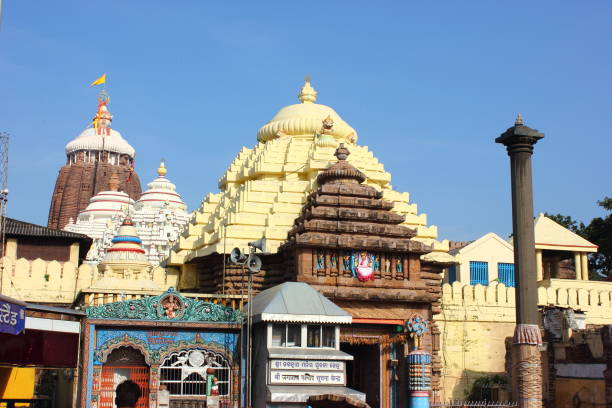
The Shree Jagannath Temple is a Hindu temple dedicated to Lord Jagannath, a form of Lord Vishnu, located in the coastal town of Puri in the Indian state of Odisha.
It is one of the most important pilgrimage sites for Hindus, and the annual Rath Yatra or chariot festival, held in Puri, is attended by millions of devotees from around the world.
The temple complex covers an area of over 400,000 square feet and features several smaller shrines dedicated to other deities.
The main temple is a massive structure, with a height of over 200 feet, and is made of stone and wood.
It has four entrances, each facing a different direction, and is surrounded by a high wall known as the Meghanada Pacheri.
The presiding deities of the temple are Lord Jagannath, his brother Balabhadra, and their sister Subhadra.
The idols of the deities are made of wood and are replaced every twelve years in a ritual known as the Naba Kalebara.
The Shree Jagannath Temple is known for its rich history and cultural significance, and it is considered one of the Char Dham pilgrimage sites for Hindus.
The temple attracts thousands of devotees and visitors every day, who come to offer prayers and seek blessings from the presiding deities.
Apart from the Rath Yatra, the temple also celebrates several other festivals throughout the year, including the Snana Yatra, Chandan Yatra, and Ratha Anukula, among others.
These festivals are marked by elaborate rituals, processions, and offerings made to the deities.
Conclusion
Hinduism is one of the world's oldest and most complex religions, with a rich history and cultural significance that has endured for thousands of years.
It is a diverse religion with many different practices and beliefs, and it is characterized by a deep reverence for the divine, a focus on personal and spiritual growth, and a commitment to social and environmental responsibility.
Hindu temples play a central role in the practice of Hinduism, serving as places of worship, pilgrimage, and community gathering.
They are often elaborately designed and decorated, featuring intricate carvings, paintings, and sculptures that depict the stories and teachings of Hindu mythology.
From the majestic Angkor Wat in Cambodia to the serene Sringeri Sharada Peetham in India, the world is home to many magnificent Hindu temples that showcase the beauty and diversity of the religion.
These temples serve as important centers of spiritual and cultural significance, attracting millions of visitors each year and providing a glimpse into the rich history and traditions of Hinduism.
Overall, the Hindu temples are not just places of worship, but also centers of cultural, social, and spiritual significance that serve as a source of inspiration and guidance for millions of people around the world.
